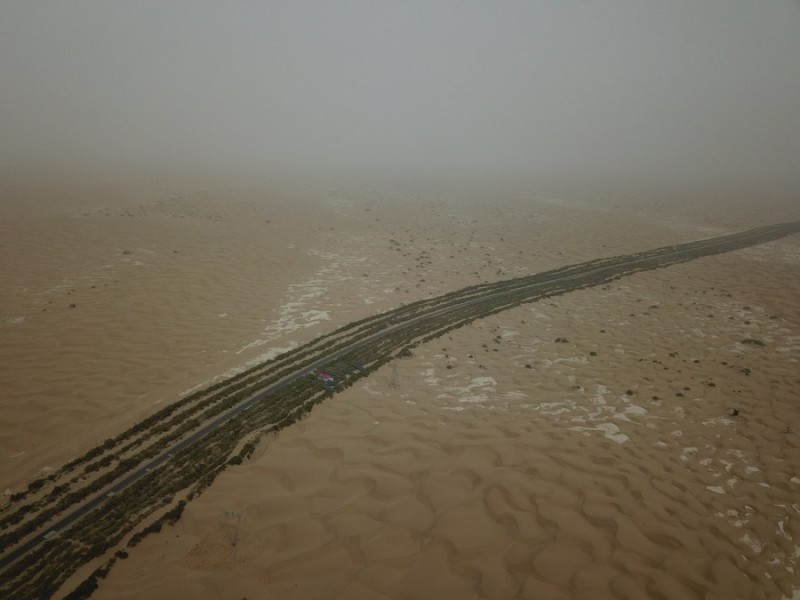
URUMQI, April 15 (Xinhua) -- As the sandstorm subsided, Xu Bo picked up his pliers, jumped into the car and continued to patrol the "green wall" that cuts through the Taklimakan Desert from north to south.
"It feels like these plants are my children," the 59-year-old forest ranger said.
Xu works in the Tazhong branch of the PetroChina Tarim Oilfield in northwest China's Xinjiang Uygur Autonomous Region. Tazhong literally means the center of the Taklimakan Desert, the world's second largest shifting-sand desert.
The "green wall" under his watch is a shelterbelt, measuring 436 km long and over 70 meters wide, along the Tarim Desert Highway. It consists of some 20 million trees planted on both sides of the road.
When Xu came to the Tazhong branch in 2004, the "green wall" was but a batch of saplings. He spared no effort to protect them from sandstorms, drought and wild animals.
The experience of bringing up those plants was unforgettable, he said. "It's harder to grow a tree in the desert than to bring up a child."
The Taklimakan Desert is the largest in China, with an annual average precipitation of no more than 100 mm, while evaporation reaches as high as 2,500 mm to 3,400 mm. The Tarim Oilfield has constructed 109 well stations to pump water for the trees.
Yet water was just one of the many challenges. The barren desert and high-alkaline soil made it very difficult for saplings to survive. Over and over again, the man was worried to tears as the little trees died.
Lacking in botanical knowledge, Xu frequently consulted experts for advice and carried out numerous experiments. Finally, his hard work paid off. Over 80 percent of the saplings survived, growing into today's "green wall."
In the course of many years guarding the shelterbelt, he has encountered countless sandstorms and other difficulties. He fell into deep wells and got stuck in the sand several times; he suffered injuries to the eyes, hands and ankles; and the strong ultraviolet light in the desert has caused him astigmatism.
"What's difficult is the repetition. Many people suffer from 'desert syndrome' when they stay in the desert for a long time, making it difficult to motivate themselves," he said.
However, none of these difficulties has caused him to quit. After 18 years, Xu has become so familiar with his "green wall" that if anything goes wrong with any part of the shelterbelt, he can spot it at a single glance.
"No matter what trouble I've encountered, be it sandstorms, scratches or sprains, the sight of the shelterbelt along the desert road makes me feel like my children have grown up," he said.
Xu is up for retirement a year from now, and he said it will be emotionally hard to say goodbye to his trees.
But he knows that they will be well cared for. The Tarim Oilfield invests 25 million yuan (about 3.92 million U.S. dollars) a year in building and maintaining the shelterbelt.
In January, it began to renovate well stations along the desert road, replacing diesel engines with photovoltaic power generators for pumping irrigation water, which will eventually reduce carbon dioxide emissions to zero.
Xu's plan is to complete the replacement of old irrigation pipes before he retires. "There is a limit to what I can do before retiring. But at least I can provide better conditions for my 'children'," he said.